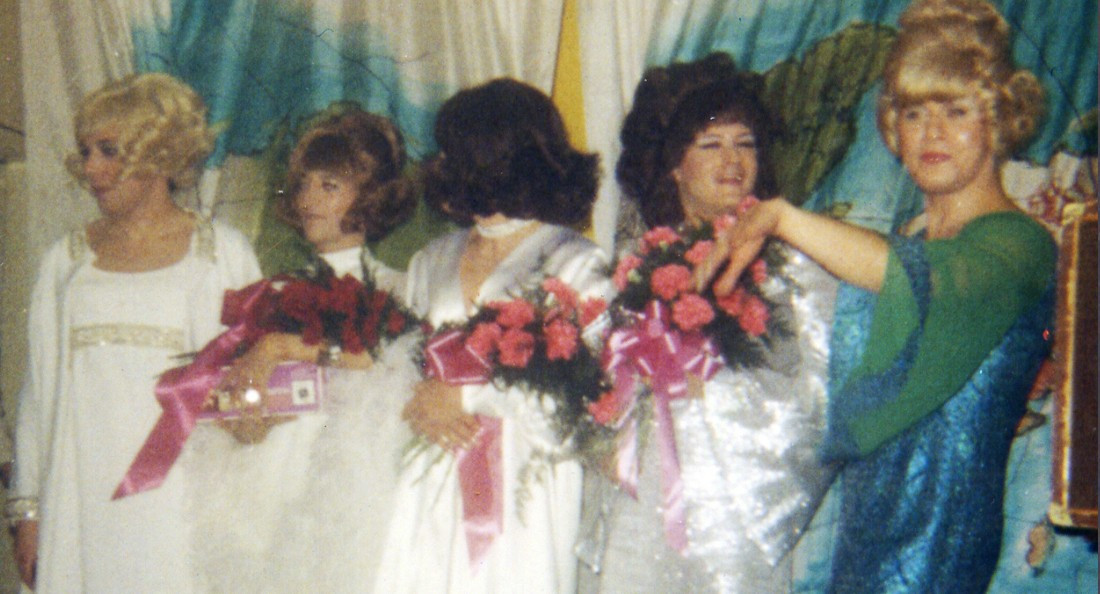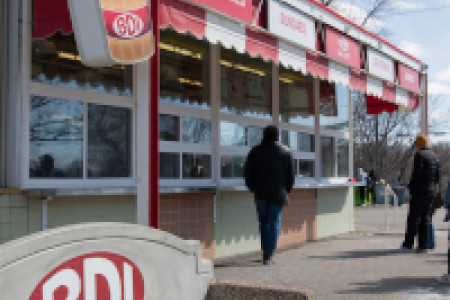An (incomplete) queer history: Winnipeg drag
A crash course in the past, present and future of Winnipeg drag
While RuPaul’s Drag Race sits at the forefront of drag representation in popular culture, there’s much more to the art form than simply female impersonation. Behind every drag performer, there are local histories spanning many decades.
“Contemporary local drag is nothing like what you see on TV, not here in Winnipeg at least,” Graeme Houssin, the producer and host of the Drag in the Peg podcast, says. They perform under the monikers of Contessa Lestrange and Visconte.
“It’s so much grosser. It’s a thousand times more creative. It’s way campier. And it’s cheaper! And so much less toxic,” they say. “It is literally miles away from what you’ve seen on TV and on social media, in terms of gender expression and the gatekeeping that goes on.”
Drag in the Peg holds space for drag performers to tell their personal experiences from their time working in the Winnipeg scene. The fifth installment of the first season features Vida Lamour DeCosmo, a legendary queen who has been performing for nearly 20 years.
“Not all (current) performers know where drag has come from,” Vida says in her featured episode of the podcast. “When I started doing drag, we were still fighting the fight. We were at the frontlines of it. It was still a really homophobic time.” In the 1930s, Halloween socials held by the Scottish Society of Winnipeg were a popular choice for gay men to go out in drag relatively undetected. // Supplied photo
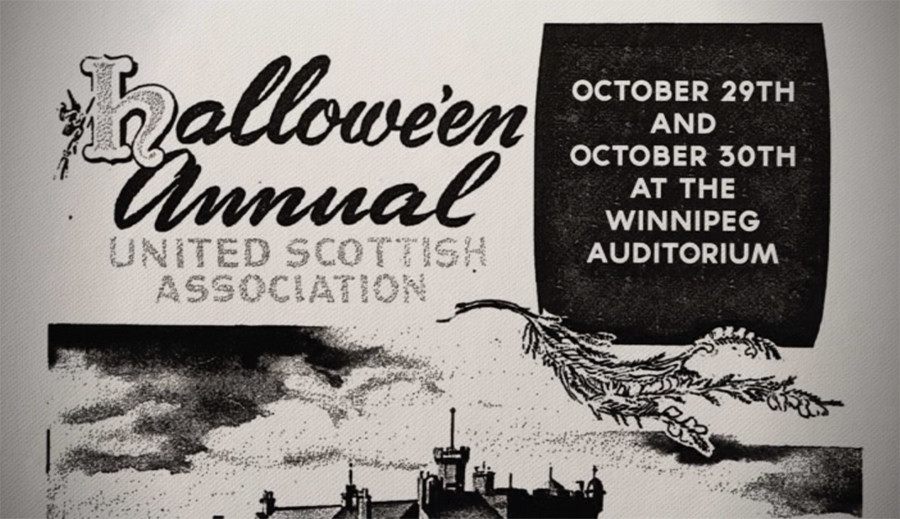
Before 2SLGBTQIA+ people were part of the mainstream pop-culture landscape, and long before queer-owned and -operated establishments existed, people dressed in drag took to hotel beverage rooms, such as those at the St. Regis and the Mount Royal, and events at cultural centres, often under the cover of Halloween festivities to express themselves in drag.
The earliest recorded stories of Winnipeg men dressing in drag can be found in audio interviews that were recorded by David Theodore and are housed at the University of Manitoba’s Gay and Lesbian Archives. Stories told by interviewees date back as far as the 1930s, an era often referred to as the “Pansy Craze.”
“We used to go every week to this place in St. Boniface to play cards – a straight place,” George Smith says in an audio interview from 1990.
“We went by streetcar in our drag, and we walked in there, and (the other patrons in the bar) just about fell over. But they enjoyed it. I don’t know how wise they were to us, but they thought it was terrific, and many of the men asked me to dance. We did some silly things,” Smith says.
Bert Sigurdson is another community member who was interviewed for Theodore’s oral history tapes. Sigurdson was 16 years old in 1938 and started dressing in drag around that time.
“We would play hooky from school in the afternoon and start sewing. The Scottish Society used to have a ball on Halloween with hundreds of people in all kinds of costumes. It was a good coverup for us to go out all dressed up,” Sigurdson says in another tape from the same archive.
After the Second World War, a new wave of conservatism affected the level of flamboyance that gay people were able to safely portray in public, due to the ushering in of post-war nuclear family values. Because of this, drag was not a popular or safe activity.
Queen Honey Monroe started dressing in drag in the 1950s and is pictured here with date Jack Raynor in 1969 at Champs Motor Inn, which was later the Osborne Village Inn. Raynor went on to be the first president of Happenings Social Club, one of the first members-only queer gathering places in Winnipeg. // Supplied photo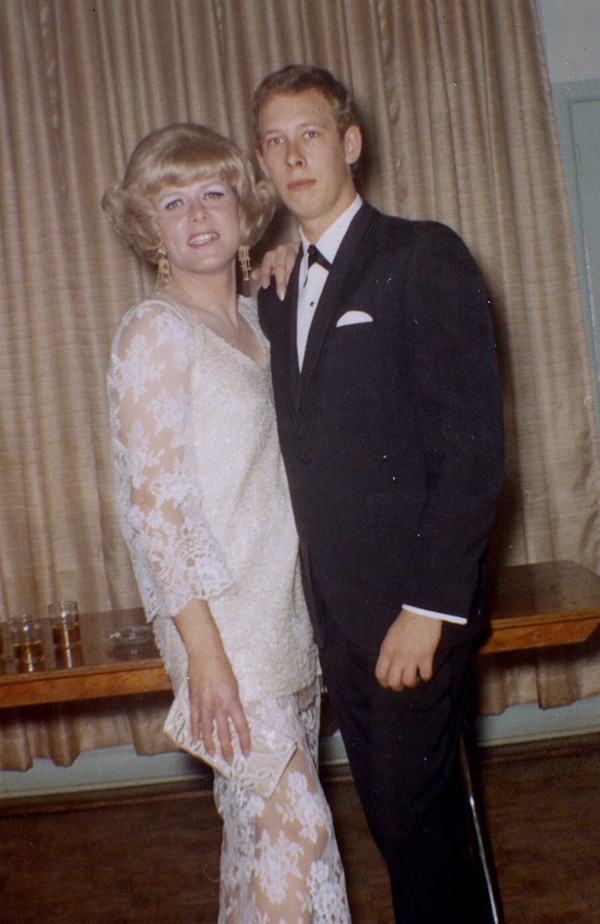
“Unlike their younger selves, who challenged gender norms with effeminate and flashy clothes and makeup, in the 1940s and 1950s, (queer people) largely followed middle-class conventions,” Valerie Korinek writes in her book, Prairie Fairies, A History of Queer Communities and People in Western Canada, 1930-1985.
In the late 1960s, local drag culture began to take off within the walls of rented community centres and bars. Drag pageants and balls invited performers to show off their best looks and be stars for the evening.
The Beaux Art Balls were a popular series of annual queer parties. The 1969 ball saw as many as 250 people in attendance and was complete with dinner, dancing and a drag show. Some of the first documented appearances of local women performing as drag kings happened at the Beaux Art Balls of the 1960s.
The prevalence of drag “kings and things” in the scene has waxed and waned over the years. Drag king Dirt, who is one-third of the team behind the event series Slunt Factory, is adamant that the community recognize their role in the Winnipeg queer history canon.
“Drag kings and masc people have been a part of our local drag history, but I don’t think it’s been acknowledged as drag (until recently),” he says.
“I’ve been very happy to see this growing movement of non-queen performers coming through. I’m really hoping that it’s going to keep growing. It’s become easier for people like me to participate in these things and have that seen as a valid form of drag.”
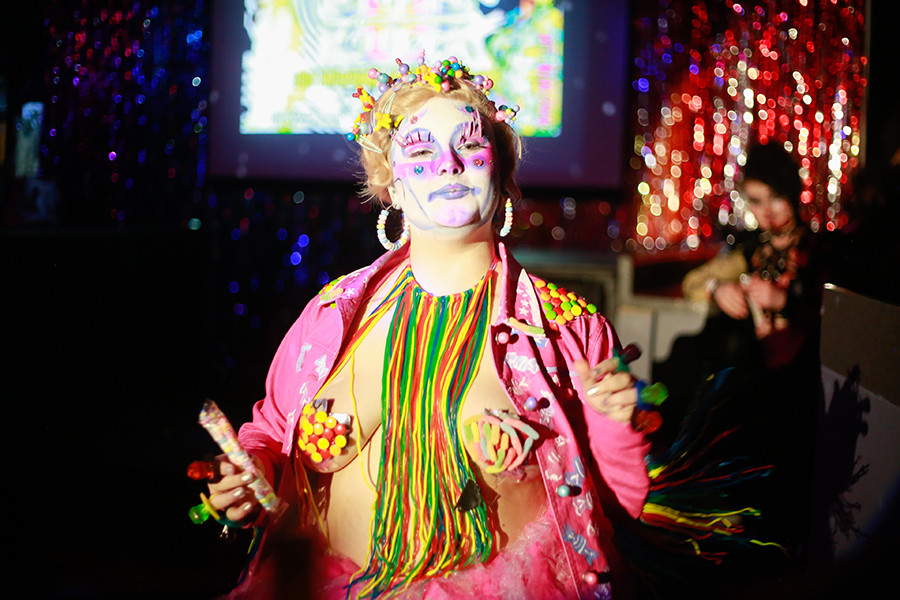
Drag king Dirt performs a lip-sync number in a costume nearly completely made of candy at the Snowy Owl Monarchist Society's Entertainer of the Year Pageant. // Photo by Callie Lugosi
Stara David, a performer who collaborates with Dirt on Slunt Factory events, feels that RuPaul’s Drag Race sets up unrealistic standards.
“It’s very good at setting up a narrative that doesn't accurately reflect what actual drag scenes are like,” Stara says. “For example, they've really hammered home the narrative that drag is just men in wigs and completely (ignore) the whole spectrum of what it can be.”
Stara David performing a lipsync number at the Entertainer of the Year pageant on October 18.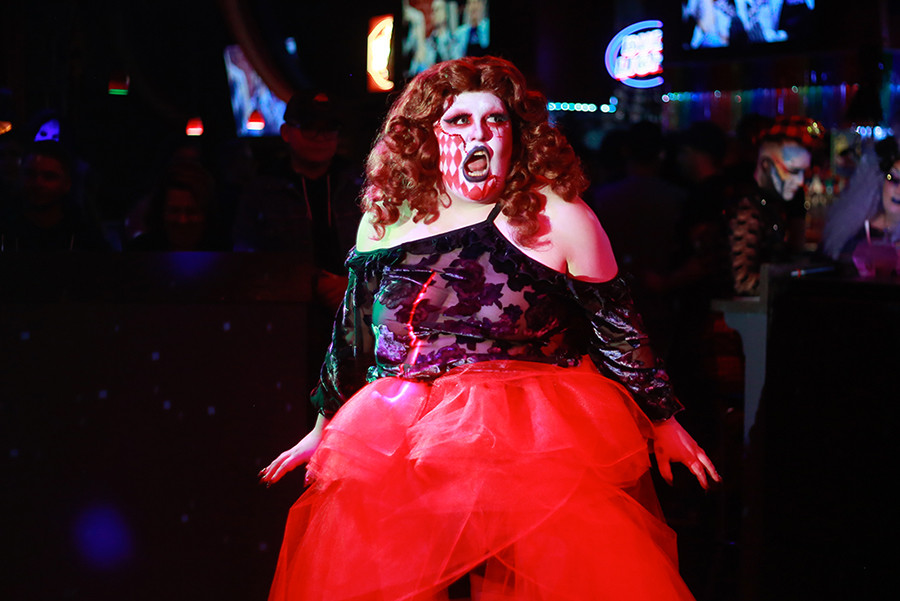
While the size of the drag community continued to grow throughout the 1970s and ’80s, being openly gay and being seen in public in drag was dangerous.
“You had to be careful, because you could get beat up walking down the street,” drag queen Joan Costalotsa says. “Gay bars were much more limited in accessibility as far as who they would let in. If they didn’t know you, you probably wouldn’t get in. They were secured spaces. It was in the name of our safety.”
Joan made her drag debut at Happenings Social Club in the late 1980s. Under pressure from her friends, she entered the Miss Happenings pageant.
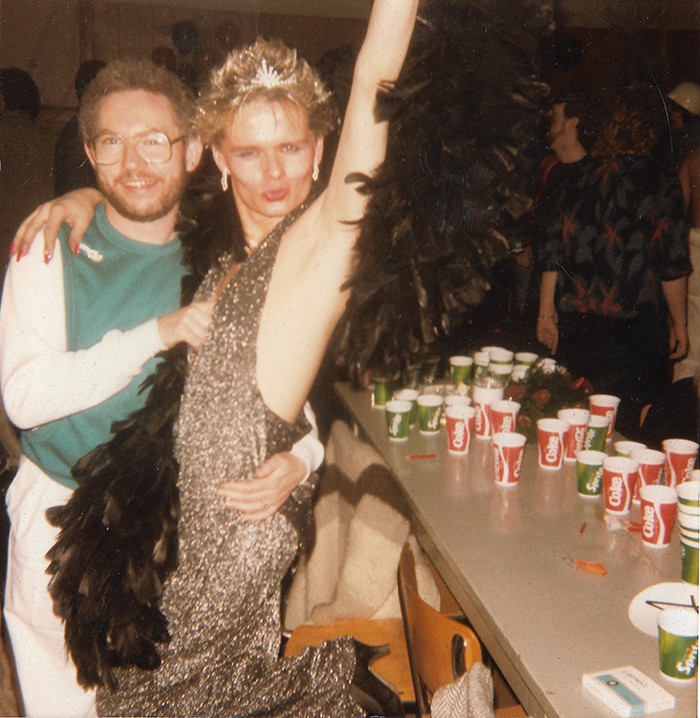
Joan Costalotsa on the night she debuted in drag and won the Miss Happenings pageant. // Supplied photo
“They gave us paper plates with numbers on (them), and we paraded around, showing off,” Joan says. “I was so nervous and so terrified. When it was over, I just thought, ‘Thank god that's done’ and threw my plate under the table and carried on partying.
“When they started to announce the winners and called out number 10, I was just sitting there with my drag mother Jennifur and my friends, thinking ‘Who is this person? Are they going to make a grand entrance? What are they waiting for?’
“Jennifur said, ‘Where is YOUR plate?’ ‘I threw it under the table!’ She looked at me and said, ‘You idiot, that's you!’ That was a neat way to start things,” she says.
Joan later went on to become a part of a group known as the Palm Sisters. The group regularly performed at Giovanni’s Room, a gay bar that operated from 1982 to 2013, and were known for creating elaborate stage sets to perform in.
_900_625_90.jpg)
Joan Costalotsa (second from left) and her fellow Palm Sisters, wearing T-shirts they made themselves. // Supplied photo
“Whatever money we raised through tips, we gave it to charity” she says. “Charity has always been my motivator. I have a line that I used since I started. It’s not a right to be on the stage, it’s a privilege. And if you’re not giving something back to your community, you have no business being there.”
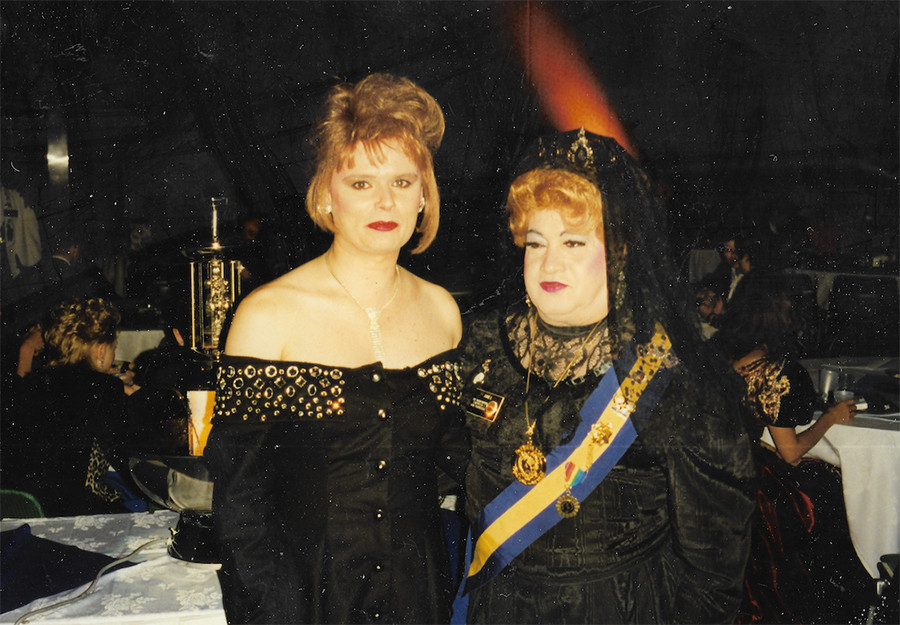
Joan Costalotsa and Mama José Barrio, the founder of the International Imperial Court System, at Winnipeg’s first Barony Ball in 1997. // Supplied photo
Founded in 1965 in San Francisco by Mama José Barrio, the International Imperial Court System is one of the longest-running grassroots 2SLGBTQIA+ organizations in the world, with over 70 chapters worldwide raising money and awareness for local charities.
The Winnipeg chapter of the Imperial Court was given barony status by Mama José Barrio in 1997 and had their first Barony Ball in May that year. By August 1997, the Snowy Owl Monarchist Society was officially founded and incorporated.
The structure of the court system mimics the British monarchy, with each locale choosing an upper court to represent their community for a term of one year.
Empress XX Foxy Beast performing at the Entertainer of the Year pageant. // Photo by Callie Lugosi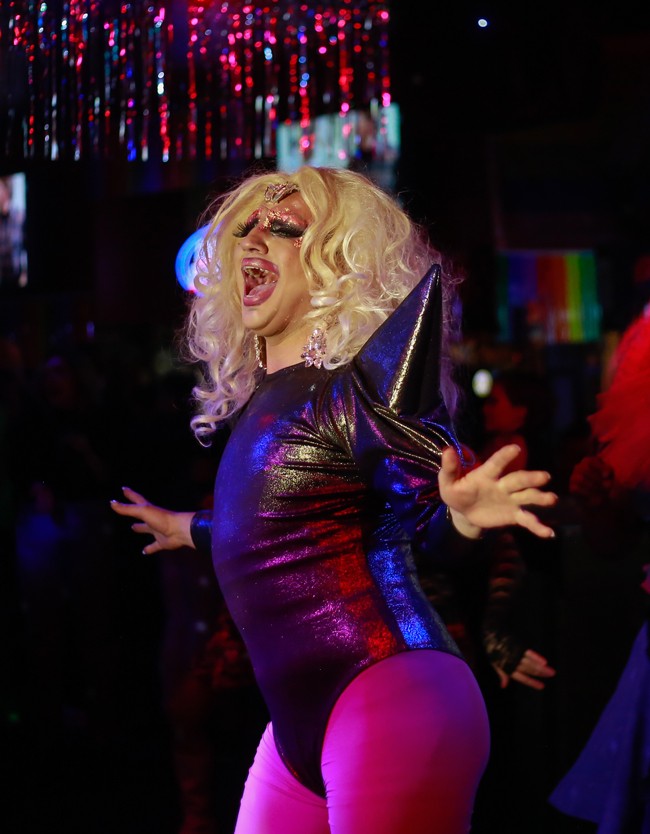
The institution of drag pageants has been historically centred around drag queens. However, current reigning Empress of Winnipeg and all of Manitoba, Foxy Beast is excited for the future of the art form and the space being created for people of all gender identities to participate in pageants and beyond.
“It’s all about changing with the times, with our community changing and growing and adapting. It’s absolutely beautiful to see,” she says. “If you’re willing to go out of your house, get out of your own comfort zone and represent your art and the strength behind what you’re doing ... that’s drag. Drag is drag is drag.” Performers Peppermint Phattie and Jaryd, dressed as David Bowie and Annie Lennox, do an enthusiastic lip sync to “Under Pressure" at a Genderplay Cabaret event. // Photo by Callie Lugosi
Genderplay Cabaret
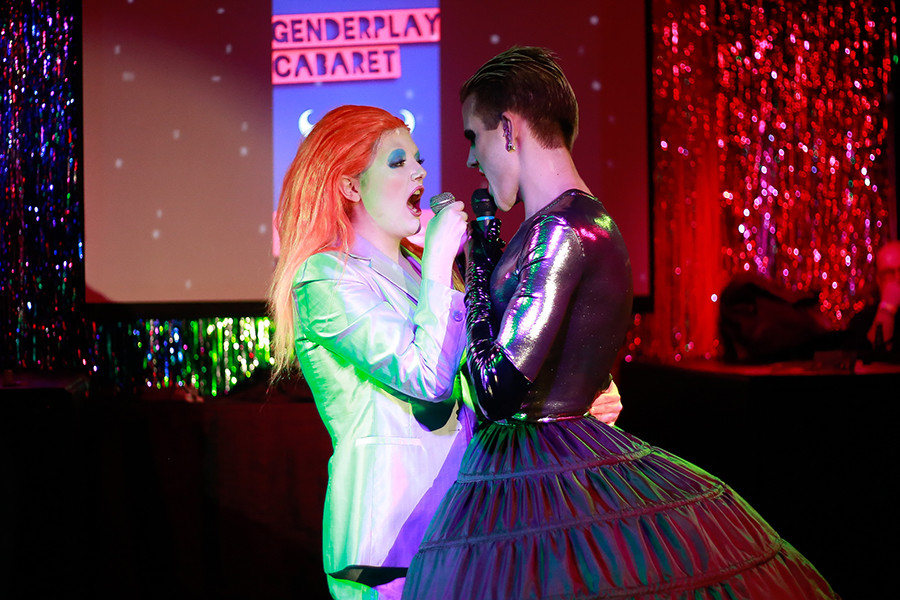
Genderplay Cabaret was a community of kings and queers who put on performances from 2001 until 2007 and offered space for people to explore gender expression through performance. Genderplay Cabaret hosted the seventh annual International Drag King Extravaganza in 2005.
Renu Shonek, who performs as Hari Vijaijay, rebooted Genderplay Cabaret in 2018 to accommodate a resurgence of performers who don’t consider themselves drag queens.
“RuPaul’s Drag Race does a lot of service in terms of people being exposed to drag, but also a lot of people are really focused on boxes within it,” Shonek says. “People really need to feel a sense of belonging and not be so focused on whether they fit into a mould.”
They note that “a lot of people were like, ‘are you doing a drag king show?’ And I kept on telling people that it’s a genderplay show: anything on the spectrum of gender can be expected.”
Proceeds earned at Genderplay Cabaret showcases are going towards funding a library that exclusively features work by 2SQTBIPOC authors.
The Sunshine Bunch
Feather Talia and Prairie Sky performing in the Fringe Festival production A Glimpse of Sunshine. // Supplied photo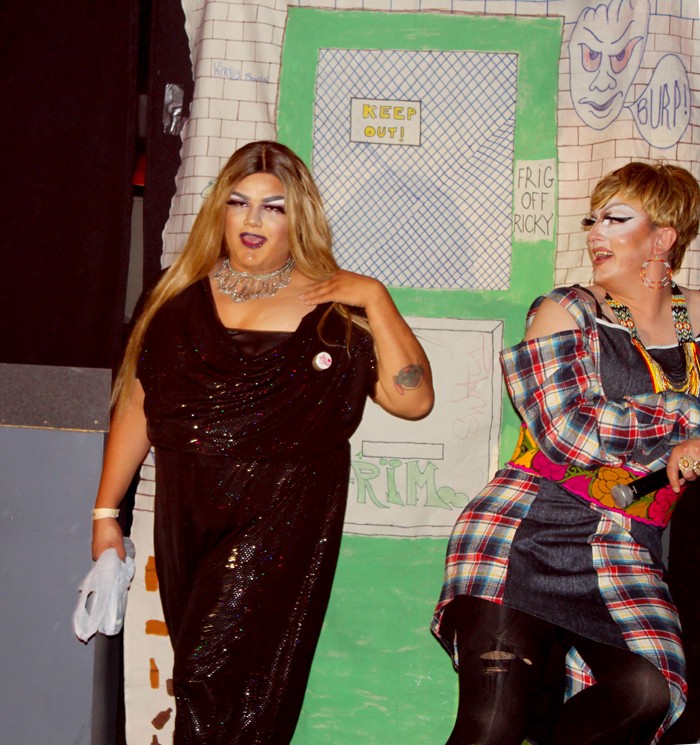
Drag is no longer confined only to bars: the Like That program at Sunshine House is home to the Sunshine Bunch, a group of performers who do it all: from reading to children at Read by Queens, a monthly event at the Harvey Smith Library, to putting on Fringe Festival plays to fundraise for the organization.
Slunt Factory
From left: Stara David, Dirt and Moxie Cotton churn out new performers on a monthly basis through their event series Slunt Factory. // Photo by Callie Lugosi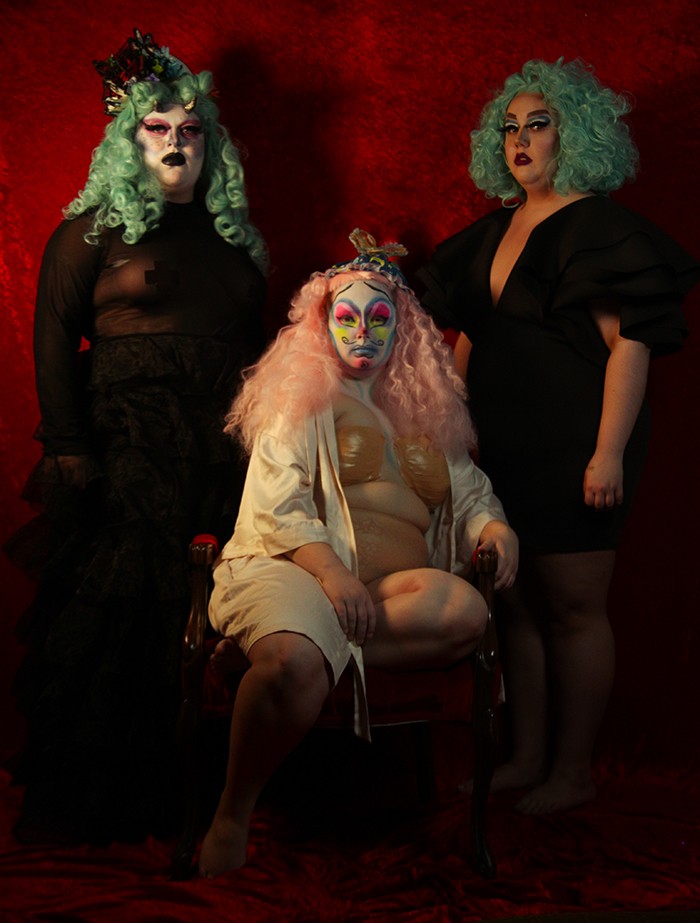
The trio of performers Stara David, Dirt and Moxie Cotton host an event series called Slunt Factory at Club 200 on the last Sunday of every month.
Dirt says over a dozen performers have gotten their start at Slunt showcases since they began in October 2018.
“We didn’t make (the performers) as good as they are. They did that themselves, but it’s amazing to know that we were able to give them a platform to try that and to feel safe enough to make their first couple of steps out onto the stage,” he says. “It’s really heartwarming.”
“I think the more people to put on shows to perform, the better, because you’re going to make the most diverse and the most interesting and colourful scene you can get.”
“Everyone should try drag at least once. There are a lot of things it will make you realize about yourself and how you perceive yourself and your gender and how you perceive other people around you. It’s such a freeing experience for so many people. It’s so fun to get dressed up and to feel so powerful or so beautiful, different and free to do whatever you want. It’s just fun and fresh and frisky, you know?”
Published in Volume 74, Number 7 of The Uniter (October 24, 2019)

